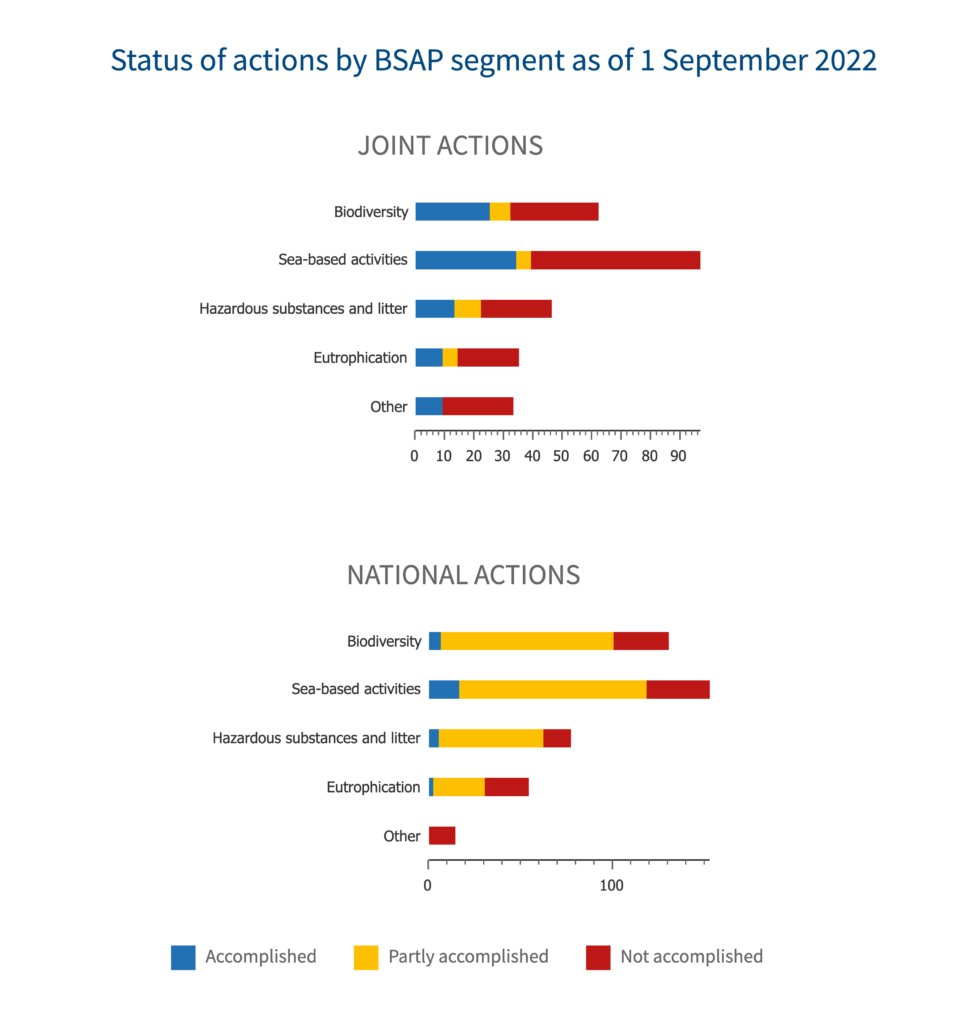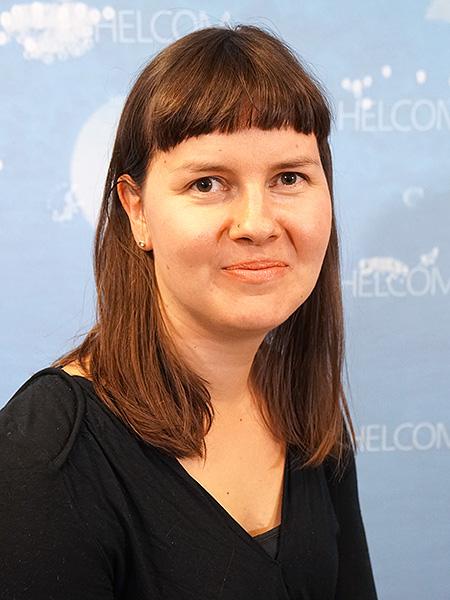The recently updated online tool HELCOM Explorer allows to easily see how HELCOM cooperation bears fruit, and how the countries’ actions are being fulfilled when reaching the majority of their ambitious HELCOM targets and the ultimate goal: Baltic Sea in good ecological state.
The actions listed in the Explorer include the entire updated Baltic Sea Action Plan (2021), HELCOM Ministerial Meeting commitments from 2010 onwards as well as selected HELCOM Recommendations. The updated BSAP contains 199 concrete actions and measures addressing biodiversity, eutrophication, hazardous substances, and sea-based activities such as shipping and fisheries. In addition, it includes new actions on emerging or previously less highlighted pressures such as climate change, marine litter, pharmaceuticals, underwater noise, and seabed disturbance.

The updated BSAP is also closely aligned with international and regional objectives such as the UN Sustainable Development Goals (SDGs), the targets of the Convention on Biological Diversity (CBD), or, for those of our Contracting Parties that are also EU members, the EU’s Marine Strategy Framework Directive (MSFD). All actions are to be implemented by 2030 at the latest.
“As the HELCOM Explorer provides a comprehensive overview and a great amount of information on both joint and national actions, with easy filtering tools, it is quite a unique system in regional marine governance. Moreover, it is a very concrete indicator of transparency for our stakeholders and to the broader audiences”, says Rüdiger Strempel, Executive Secretary of HELCOM.
Joint actions are carried out together by all HELCOM Contracting Parties, for example creating a new Recommendation, joint management guidelines, or assessments of environmental status. National actions are implemented at the country level, and they include e.g. incorporating the provisions of a HELCOM Recommendation into relevant national legislation or guidelines.
The Explorer allows for easy overview browsing, but also for more detailed filtering, according to the details of the actions in the Baltic Sea Action Plan such as segment, theme, or target year. The tool further provides information on why the action is needed (rationale), what pressures or activities are addressed by the action in question, and, for some, what is the potential effect of the measure to reduce pressures or improve the state of the Baltic Sea. All data is available for download.
The HELCOM Explorer tool to track the progress on the implementation of HELCOM commitments was first launched in 2016, and the interface was updated in 2020.
The reporting on the implementation of the joint actions is done by relevant HELCOM Working Groups and the reporting on the national actions by the countries. The first reporting on the implementation of actions in the 2021 BSAP is planned to take place in 2025, followed by the second reporting round in 2029.
Contact

Laura Kaikkonen
Project Researcher
laura.kaikkonen@helcom.fi

Susanna Kaasinen
Associate Professional Secretary
susanna.kaasinen@helcom.fi
About the Baltic Sea Action Plan (BSAP)
The Baltic Sea Action Plan (BSAP) is HELCOM’s strategic programme of measures and actions for achieving good environmental status of the sea, ultimately leading to a Baltic Sea in a healthy state.
Initially adopted by the HELCOM Contracting Parties in 2007, the 2021 BSAP is based on the original plan and maintains the same level of ambition. It also retains all actions previously agreed on that are still to be implemented, while, in addition, includes new actions to strengthen the existing efforts and tackle emerging concerns.
Guided by the HELCOM vision of “a healthy Baltic Sea environment with diverse biological components functioning in balance, resulting in a good ecological status and supporting a wide range of sustainable economic and social activities”, the updated BSAP is divided into four segments with specific goals: biodiversity, eutrophication, hazardous substances and sea-based activities.
About HELCOM Recommendations
One of the most important duties of the Helsinki Commission is to make Recommendations on measures to address certain pollution sources or areas of concern. Since the beginning of the 1980s HELCOM has adopted some 260 HELCOM Recommendations for the protection of the Baltic Sea. The implementation of various HELCOM recommendations by the HELCOM Contracting Parties plays an important role in achieving the objectives of the Baltic Sea Action Plan. The HELCOM Explorer covers the reporting on the implementation status of selected HELCOM Recommendations.
About HELCOM
The Baltic Marine Environment Protection Commission – also known as the Helsinki Commission (HELCOM) – is an intergovernmental organization (IGO) and a regional sea convention in the Baltic Sea area, consisting of ten members: the nine Baltic Sea countries Denmark, Estonia, Finland, Germany, Latvia, Lithuania, Poland, Russia and Sweden, plus the European Union. A platform for environmental policy making at the regional level, HELCOM works for a healthy Baltic Sea. Its mandate stems from a regional treaty, the Helsinki Convention, whose implementation it oversees. The HELCOM Secretariat is located in Helsinki, Finland.

